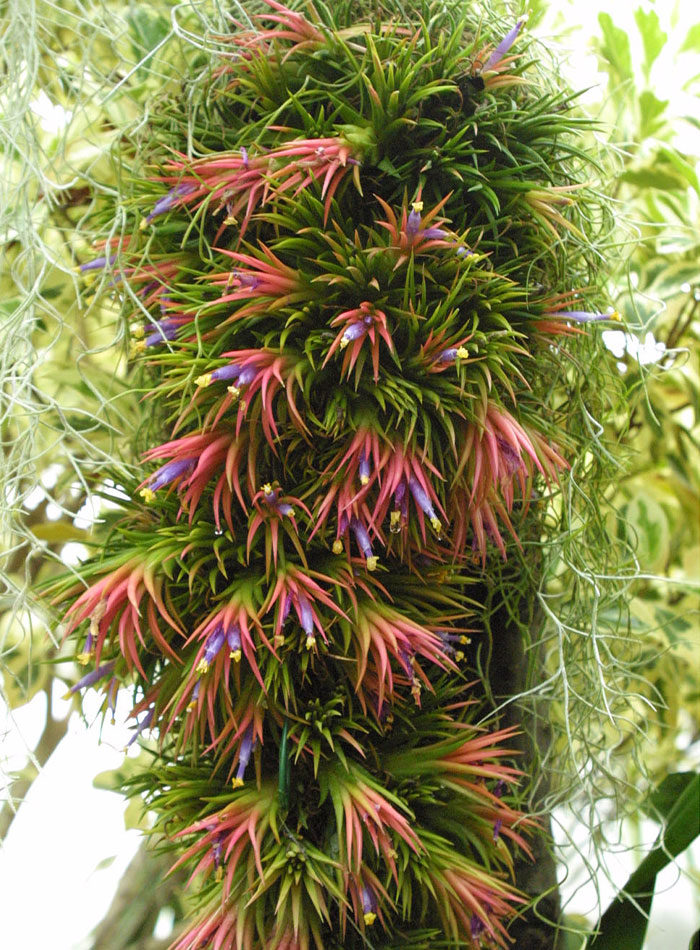
Air plants (Tillandsia spp., Zones 10–12) are beautiful little creatures, though they intimidate many plant lovers. They have become quite trendy over the past few years, and you can’t look through a furniture or decor catalog without spotting a few. We’ve pulled together photos and descriptions of some of our favorite species, as well as a quick guide on how to care for them and creative ways to display them.
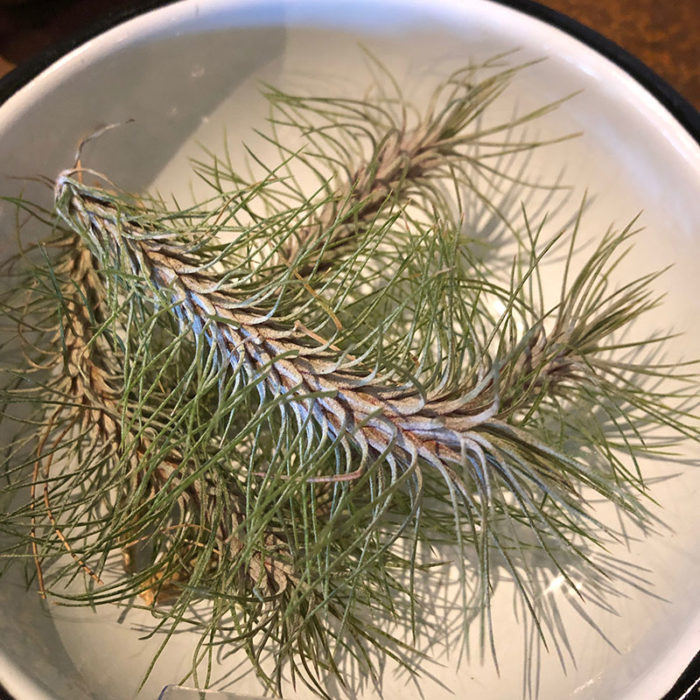
Air plants are extremely hardy as houseplants, and they love the outdoors as long as they’re in a frost-free environment. They require bright, filtered light and can grow almost anywhere— whether it’s hanging from a string or sitting in a decorative bowl. Some people prefer to mist their air plants to keep them happy; we prefer the dunking method. Once every two weeks, we take all of our air plants and submerge them in a bowl of water for a couple of hours. If you live in an extremely dry climate, you may decide you need to mist in between soakings.
Air plants never need soil, which is one detail that makes them so unique. They actually use their leaves, not their roots, to obtain the nutrients and water they need to survive. The main purpose that their roots serve is to help them cling to trees, rocks, and branches in nature.
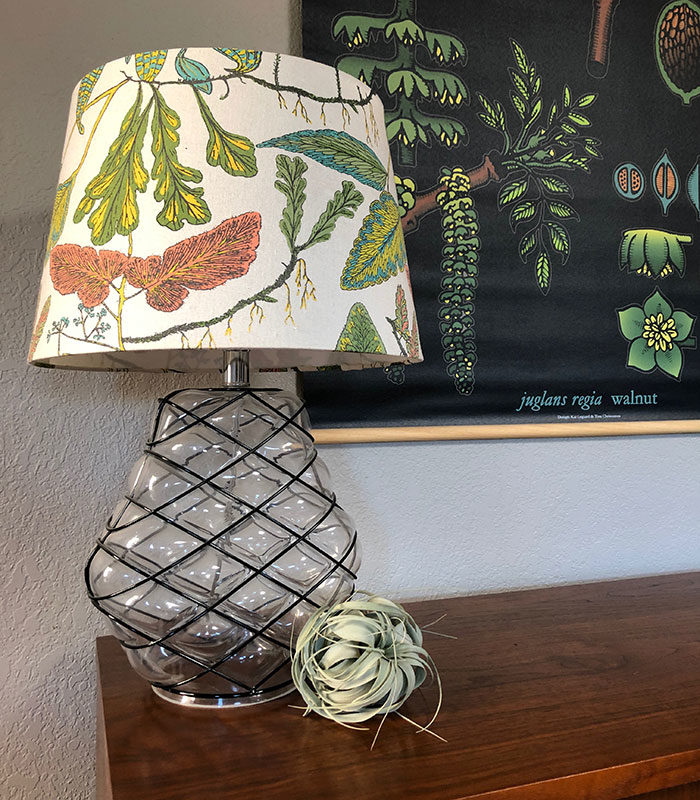
We both like many air plants for different reasons, but we do have a top three. Our first pick is the funckiana air plant (T. funckiana). This Venezuelan native looks like a cross between a fuzzy caterpillar and a pine cone. It’s small and delicate but packs a serious punch when it comes to dimension and detail. Our second favorite is the never-disappointing xerographica air plant (T. xerographica). This show-stopper is native to semi-arid parts of Mexico, Guatemala, Honduras, and El Salvador. The beautiful, minty silver, star-shaped rosette has leaves that seem to cascade down into almost a waterfall effect; they have a flocked feel to them. This air plant is definitely a must-have for any collector. Our final suggestion is the Medusa head air plant (T. caput-medusae). This tentacle-like air plant resembles Medusa’s head of snakes, which is probably why we love it. Native to Central America, it has supersturdy leaves that are soft to the touch. Unlike our other picks, this particular air plant prefers to be misted two to three times per week as opposed to soaking.
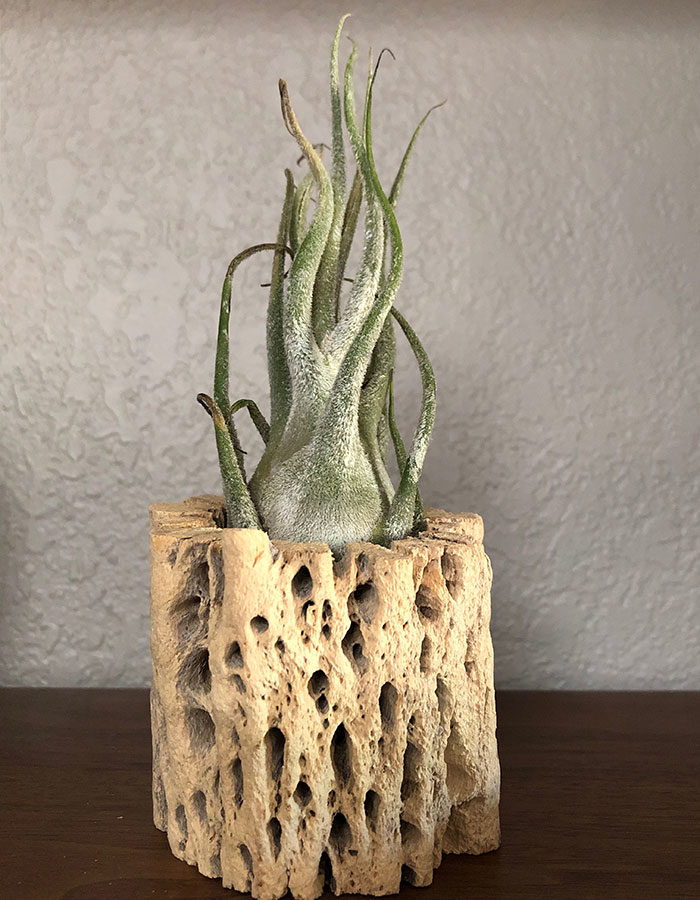
A popular way to display air plants is in glass spheres or attached to a cool piece of driftwood. But there is no wrong way to use them. They’re beautiful in a small vase, dangling from fishing line, or even as a boutonniere for a groom. Another fun idea is to create a moss-covered board and attach various air plants to it. You’ll have some amazing texture and dimension and can hang it up as a piece of art.
There is no wrong way to enjoy air plants. They are effortlessly beautiful and can essentially grow anywhere on anything. Start with a couple of different species to see how they do in your space. Once you’ve started collecting them, we promise it will be impossible to stop.
—Sheila Schultz and Laurel Startzel are a mother-daughter duo who founded Denver Dirty Girls Container Gardening while living in Denver, Colorado and have continued their business since moving to Tucson, Arizona.
Fine Gardening Recommended Products

The Crevice Garden: How to make the perfect home for plants from rocky places
Fine Gardening receives a commission for items purchased through links on this site, including Amazon Associates and other affiliate advertising programs.



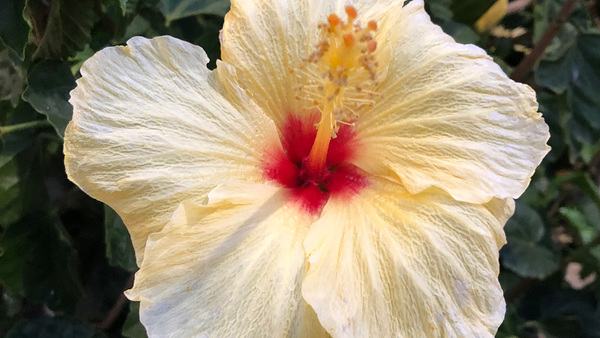















Comments
Log in or create an account to post a comment.
Sign up Log in